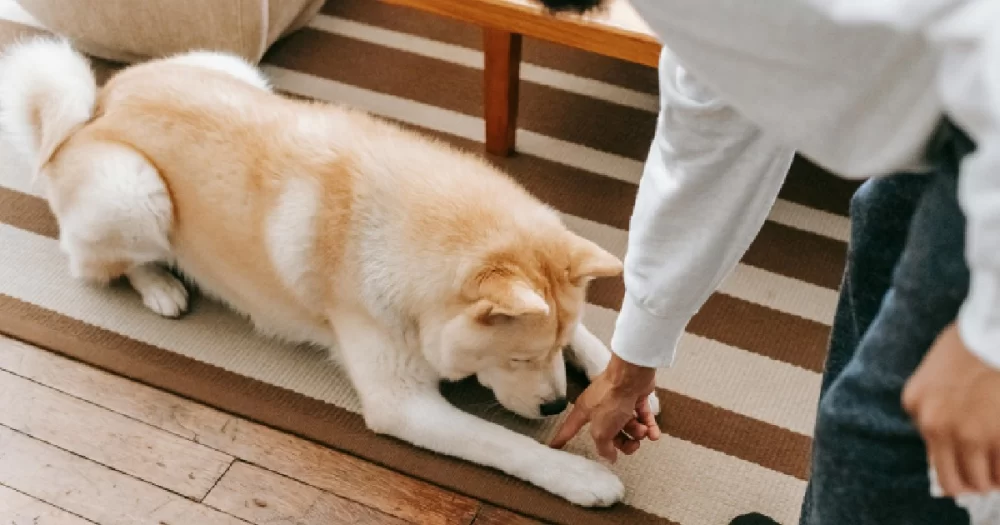Understanding Why Your Dog Barks at the Doorbell
When I first brought home my dog, Max, I didn’t realize how much his barking could get on my nerves—especially when the doorbell rang. Every time someone rang the bell, Max would go into a frenzy, barking uncontrollably and sometimes even running in circles. At first, it seemed like a harmless behavior, but over time, it became a major disruption. I realized that this behavior wasn’t just annoying—it was also stressful for both of us. I knew I had to find a solution to stop Max’s barking at the doorbell, and I was determined to figure it out.
Before diving into how I trained Max to stop barking at the doorbell, it’s essential to understand why dogs bark at this specific trigger. Dogs often bark at the doorbell because they perceive it as an intruder or something that signals the arrival of a visitor. In Max’s case, he wanted to protect his territory and alert me to a potential guest, even if that guest was just the mailman or a neighbor. This instinct to protect their space is perfectly natural, but it doesn’t always lead to the most desirable behavior, especially if your dog barks excessively every time the doorbell rings.
Step 1: Understanding the Triggers
Before starting any training, it was important for me to understand the exact triggers behind Max’s barking. Dogs are incredibly observant creatures, and they pick up on patterns in their environment. In Max’s case, the sound of the doorbell was a clear trigger that caused him to react. Once I realized that the sound of the bell was the source of his barking, I could begin to target that specific behavior.
Max wasn’t just barking out of excitement; he was reacting to the doorbell with an instinct to alert and protect. That’s why it was important for me to remain calm and consistent in my training. I knew that my behavior would also influence how Max responded to the doorbell.

1946 S Christopher Columbus Blvd, Philadelphia, PA 19148, USA
See DetailsStep 2: Desensitizing Your Dog to the Doorbell
The next step was desensitizing Max to the sound of the doorbell. Dogs tend to react to certain sounds that they associate with a specific event—in this case, the arrival of a visitor. I decided to create a controlled training environment where Max could get used to the doorbell without feeling the need to bark.
1. Repeated Doorbell Sound with No Visitor
I started by ringing the doorbell repeatedly when no one was at the door. At first, Max would still bark, but I remained calm and didn’t react. I would ring the bell, and when he barked, I would wait for him to settle down before rewarding him with a treat. The key here was to help him realize that there was no need to react—there was no actual visitor behind the door. This process of pairing the sound of the bell with positive reinforcement helped Max learn that there was no threat, and eventually, his barking would diminish.
2. Gradual Introduction of Visitors
After a few sessions of desensitizing Max to the doorbell sound without any visitors, I introduced a real visitor to the process. I rang the doorbell again, but this time I had a friend or family member standing outside. As soon as Max started to bark, I would immediately give the “quiet” command and reward him when he stopped. It’s important to be consistent with your command and reward system. Over time, Max began to understand that barking was unnecessary when someone arrived, as long as he stayed calm.
Step 3: Teaching the "Quiet" Command
One of the most valuable commands I taught Max during this training was the “quiet” command. This is a useful command for curbing unwanted barking at any time, especially when he gets excited or overstimulated by a sound like the doorbell. I used the “quiet” command whenever Max began to bark excessively, whether it was from the doorbell or any other noise. Here’s how I taught Max:
1. Wait for Max to Bark
First, I let Max bark a few times so he could release his excitement. Once he started barking, I would calmly say, “Quiet.” I waited for him to stop barking before offering a treat. The goal was for him to understand that the “quiet” command meant stopping his barking, and stopping meant getting a reward.
2. Consistent Reinforcement
Every time Max responded to the “quiet” command, I would reinforce his good behavior with praise and treats. Over time, he started associating the “quiet” command with getting rewards. Once I started using this command in combination with the doorbell training, Max learned that he only needed to stop barking to receive a treat.
Step 4: Use Positive Reinforcement
Positive reinforcement was a huge part of the process. Max responded best to positive feedback rather than punishment. I made sure to reward him whenever he stopped barking on command or didn’t bark at all when the doorbell rang. This created a positive association with the doorbell and taught him that good things happen when he stays calm.
1. Praise and Treats
For every successful attempt at quieting down, I would offer a treat and lots of praise. This not only made the training fun for Max but also reinforced the behavior I wanted to encourage. Whether it was a small treat or a favorite toy, Max quickly learned that staying calm during the doorbell ring would lead to positive outcomes.
2. Gradually Increase Distractions
To make sure Max wasn’t just reacting to the bell in a controlled environment, I began to increase the level of distractions. I would ring the bell with more excitement or have the person at the door knock loudly. As Max became more consistent with staying quiet, I gradually added more challenging scenarios. This ensured that Max would maintain his calm behavior, even when the situation became more unpredictable.
Step 5: Patience and Consistency
The most important lesson I learned during this process was the value of patience and consistency. Dog training, especially for behaviors like barking, takes time. Max didn’t immediately stop barking at the doorbell. There were days when it seemed like all the training wasn’t working, but I knew that with persistence, he would get there. Consistently rewarding calm behavior, using clear commands, and reinforcing good habits was key to our success.
Now, Max is much more relaxed when the doorbell rings. He no longer barks uncontrollably, and I’m able to answer the door without any stress. Training him to stop barking at the doorbell was a process, but it’s been incredibly rewarding to see the positive results. If you’re struggling with a dog who barks at the doorbell, remember that with the right approach and consistency, you can help your dog learn calm behavior, too.
If you're looking for professional guidance or need more personalized help, Hidden Brook Veterinary is here to assist with expert training advice. Their team can provide tailored solutions for a variety of behavioral issues, including barking and more!











